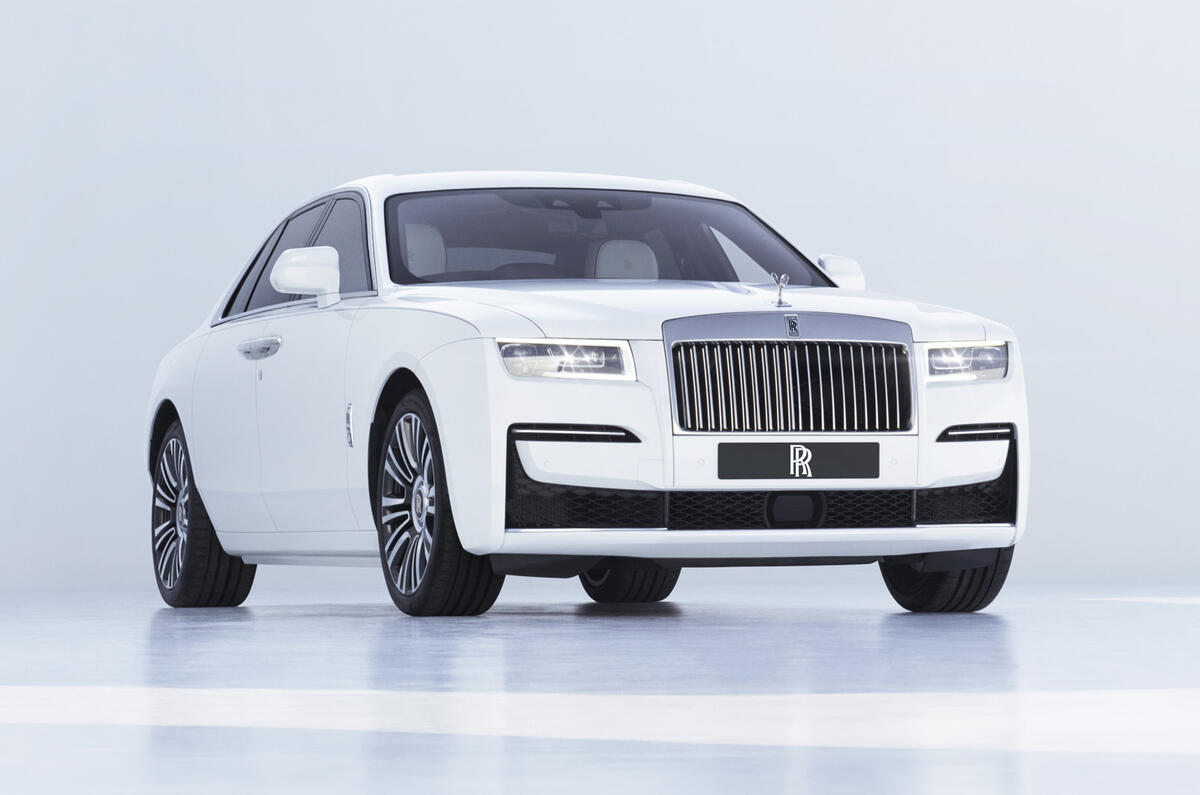Rolls-Royce has unveiled an all-new, second-generation version of the most successful car in its history: the Goodwood-built Rolls Royce Rolls-Royce Ghost saloon. The new model ditches the BMW 7 Series-derived underpinnings of the original car in favour of the latest flexible aluminium spaceframe already used for the Rolls Royce Rolls-Royce Phantom and Rolls Royce Rolls-Royce Cullinan.
Billed as a “slightly smaller, less ostentatious means of owning a Rolls-Royce” than the Phantom, the new Ghost is 90mm longer than its predecessor, at 5549mm, and 30mm wider. It’s powered by a specially adapted version of the 6.75-litre twin-turbocharged V12 introduced with the Cullinan, replacing the outgoing model’s 6.6-litre unit but offering unchanged power (563bhp) with 10% more peak torque, up to 627lb ft.
With a commensurate entry price of £208,000 before local taxes (nearer £250,000 in the UK), the Ghost is claimed to be the company’s most high-tech model yet, even more so than the Phantom by virtue of its standard four-wheel drive and four-wheel steering. It also introduces impressive new ride comfort and noise reduction measures that would appear likely in time to flow through the rest of the range.
The new Ghost’s imminent arrival has already been used by Roll-Royce to introduce the concept of ‘post-opulence’, a quality of design simplicity and purity the company’s researchers say appeals to customers who will make day-to-day use of the car, sometimes by using a chauffeur and sometimes driving it themselves. According to Rolls designer Henry Cloke, who first articulated the post-opulence idea, the flexibility of the new spaceframe allows the Ghost its impressively short front overhang (which in turn improves handling by allowing the engine’s weight to be carried entirely inside the wheelbase), and adds about 30mm of body width while maintaining an uncomplicated body side design.

The car’s styling extends the themes of the previous model. The grille now has a one-piece surround and the retractable Flying Lady now emerges neatly from a simple aperture in the bonnet, not the grille surround, creating a whole new demand for precision engineering. New LED and laser adaptive headlights have a simple but technical design, while the body side’s main feature is a single elegant line, beginning at a vertical front crease then sweeping through the car from the front wings to the extreme rear.










































Join the debate
Add your comment
All the RR you'd ever need,
All the RR you'd ever need, especially as now it's on the same platform as the Phantom
The trouble with the starry
The trouble with the starry roof thing is that you can't open it and see actual stars. What a metaphor for this world in which reality is a toublesome, unpredictable thing, best replaced by something virtual and configurable, be it stars, friends, your look, the carefully curated online version of your relationship, etc. etc.
What's so great about an
What's so great about an aluminium space frame? Jaguars have been made out of aluminium for years.